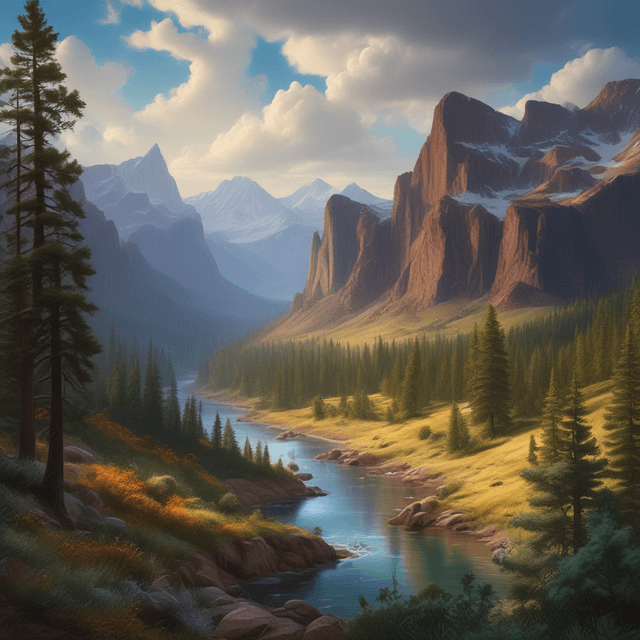
| Region | Western United States |
| Economy | Less reliant on resource extraction |
| History | Greater indigenous autonomy • Russian and Hawaiian colonial influences • Diverse multicultural identity |
| Geography | Rocky Mountains • Inland seas • Volcanic landscapes |
| Population | More sparsely populated |
| Environment | More pristine • More hazardous |
The Western United States, encompassing the states and territories west of the Rocky Mountains, has a complex and distinct history in this alternate timeline. Shaped by dramatic geological forces, shifting geopolitical influences, and the persistence of indigenous cultures, the American West developed in profoundly different ways compared to our world.
The geography of the Western US is characterized by active volcanoes, massive inland seas, and jagged mountain ranges that bear little resemblance to our own. The towering Cascade Range and Sierra Nevada mountains were formed by ongoing volcanic activity, with peaks like Mount Saint Helens, Mount Rainier, and Mount Shasta eternally capped in snow and ice.
Vast prehistoric lake systems like the Western Interior Seaway and Lake Bonneville cover much of the region's interior, their shorelines marked by dramatic fault scarps and dry lake beds. Earthquakes and tectonic plate movements are a constant threat, regularly reshaping the landscape through uplift, subsidence, and dramatic fault-line events.
This volatile geology produces a diverse array of mineral resources, from obsidian and pumice to precious metals like gold, silver, and copper. However, it also creates hazardous conditions, with the West prone to volcanic eruptions, landslides, and earthquakes that have significantly impacted human settlement.
The Western interior was first settled thousands of years ago by diverse indigenous tribes and civilizations, including the Ancestral Puebloans, Californian tribes, Plateau tribes, and others. These groups developed sophisticated agricultural, political, and spiritual traditions adapted to the region's unique environments.
European contact began in the 16th century, when Spanish and Russian explorers made inroads from the south and north. However, the region remained largely under indigenous control until the 19th century. In the 1810s, the Russian Empire established a string of forts and trading posts in the Pacific Northwest, while the Kingdom of Hawaii began expanding its influence over the Southwest and California.
The Russian and Hawaiian colonial ventures in the West were a very different experience from the rapid American expansion in our timeline. The Russians focused on the Northwest, establishing the Russian America colony and integrating local tribes into their fur trade networks. The Hawaiians, meanwhile, conquered and settled California and the Southwest, introducing crops, technologies and cultural influences from the Pacific.
Under these colonial regimes, indigenous groups maintained a greater degree of autonomy and territorial control compared to the rapid American dispossession in our history. Tribes formed alliances and treaties with the Russian and Hawaiian powers, preserving their lands and self-governance to a larger extent.
It wasn't until the mid-to-late 19th century that the Western territories were gradually incorporated into the growing United States. This process was more gradual and chaotic than the American conquest in our world, with the U.S. having to negotiate with and accommodate the existing Russian, Hawaiian and Native powers.
The admission of Oregon, California, Nevada, Idaho, Montana, Washington, Utah, and other states into the Union occurred piecemeal between 1850-1900. This slow integration allowed indigenous groups to retain more reservations and autonomy, while also limiting rapid industrialization and resource extraction.
With a later and more gradual settlement process, the American West in this timeline maintained a more pristine and ecologically intact landscape well into the 20th century. Large swaths of the region remained under indigenous or colonial control, limiting the scale of mining, logging, and other extractive industries.
However, the region's volatile geology has also posed ongoing challenges. Volcanic eruptions, earthquakes, and other natural disasters have periodically devastated infrastructure and communities. Water scarcity and the fragility of inland lake systems have also constrained agricultural and urban development.
The unique colonial history of the American West has produced a diverse and multicultural population. In addition to the indigenous tribes, significant populations of Russians, Hawaiians, Mexicans, and European Americans make up the region's demographics.
This blending of cultures is reflected in the West's architecture, cuisine, languages, and traditions. Russian Orthodox churches stand alongside Native American pueblos and Hawaiian thatched huts. Regional dialects meld Russian, Spanish, Hawaiian and English influences. The cultural landscape remains highly decentralized and distinctive from the rest of the United States.
With a less rapacious approach to resource extraction and a more gradual pace of development, the economy of the American West has followed a different trajectory. Agriculture, fishing, and sustainable forestry play a larger role, while heavy industry and mining remain more limited.
The political landscape is also more fragmented, with greater autonomy for indigenous tribes and colonial-era land grants. Political power is more diffuse, with less centralization in major cities. Populist and regionalist movements have historically been stronger here compared to other parts of the country.
Overall, the American West in this timeline presents a radically different vision - a region shaped by its unique geography, its complex colonial heritage, and the persistent influence of its indigenous peoples. It remains a land of stark contrasts, natural wonders, and cultural diversity.